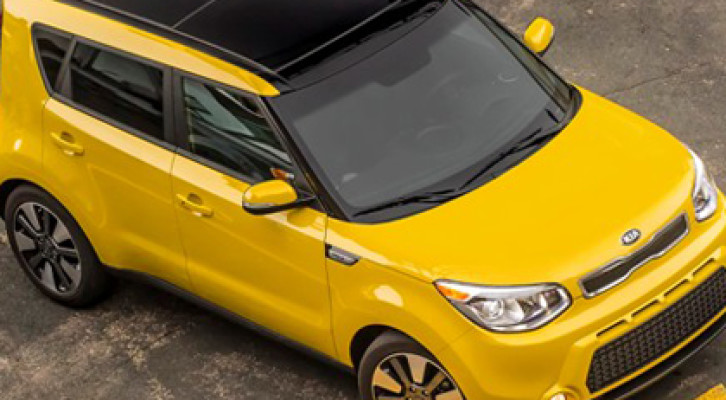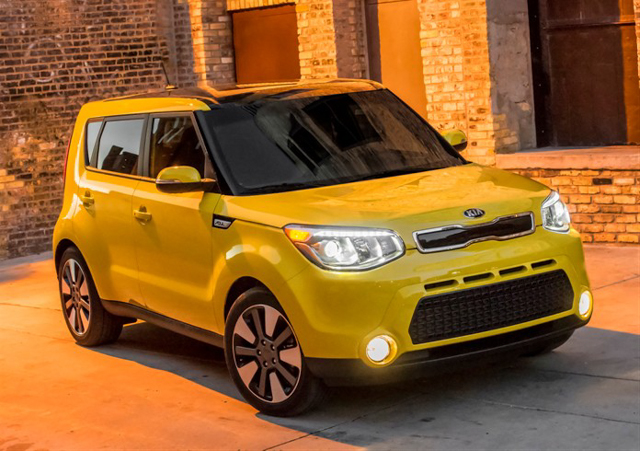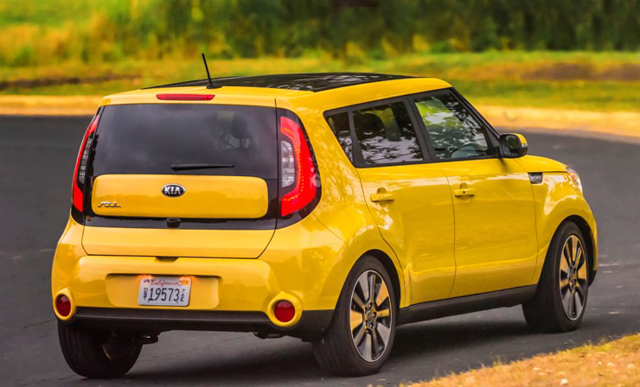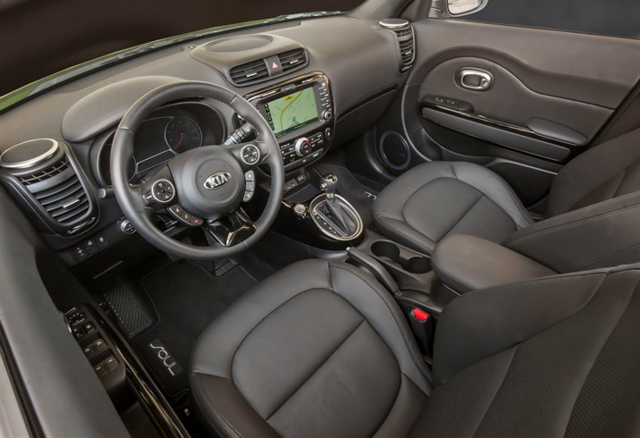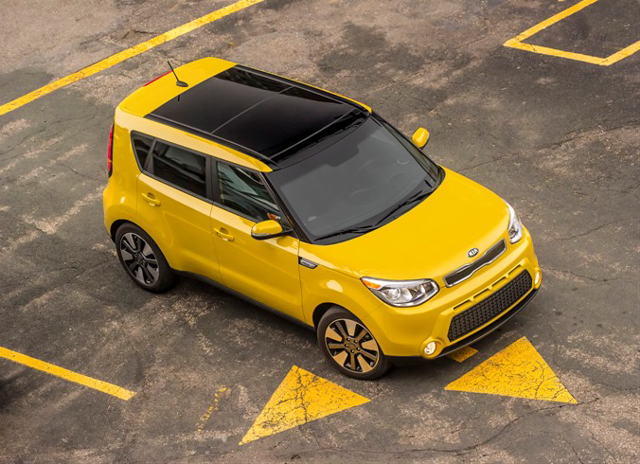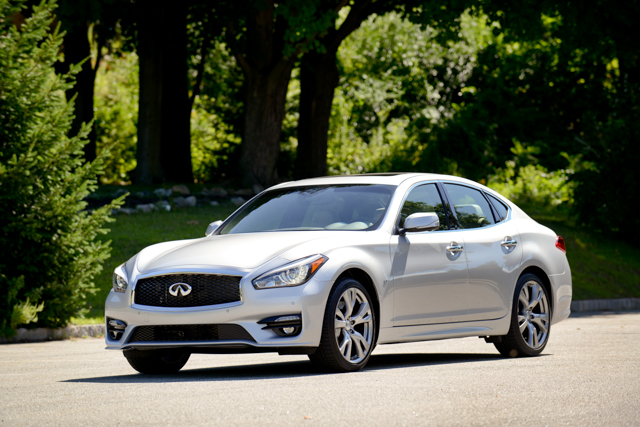It’s not hard to argue that the Soul was the spark that ignited Kia’s meteoric rise toward the top of the market. It hit just as the economy declined, and its status as an “affordable halo car” made it an instant hit among buyers who were looking for a special yet economical ride. Kia also maintained the attitude that set the Soul apart, incorporating it into the rest of the product lineup. The Soul continued as the halo car, but all things need to be renewed, and now it’s time to bring Kia’s happy box up to date.
The tricky part in updating an instantly iconic vehicle is keeping the cool stuff while still changing and upgrading. For 2014, Kia has kept the Soul’s general look the same while updating absolutely everything. The Soul was a fancy, hip-looking ride with a fairly ordinary ride, so the all-new version aims to address the driving dynamics and comfort.
Of course, things have changed since the Soul was introduced in 2008, thanks in part to the Soul itself. Premium compacts and more stylish entry-level cars have raised the bar for the segment, and the Soul’s original competitors from Scion and Nissan are going away soon. New competitors have arisen to take their place: the MINI Countryman, the Nissan Juke and the Fiat 500L. The original “box cars,” the Nissan Cube and the Scion xB, are going away soon, and there’s much more blending of the crossover and compact markets than before. The Soul’s even creeping into competition with the Honda Civic and Fit, and the Nissan Versa. It’s a pretty crowded world out there.
So, Kia’s attitude leader has gone from coming out of the blue to facing down half of the compact market. The new Soul is poised to conquer, with a wider, somewhat sportier stance that’s borrowed from Kia’s Track’ster concept car from 2012. The basic silhouette is the same, and the Soul still uses a blacked-out A-pillar to create a unique wraparound greenhouse. The vertical taillights also are familiar styling cues, and available with LED lighting. The boxy styling has picked up some subtlety as well. Kia has added curves to create “light lines” along the sides of the car, adding visual interest at night. Up front, LED elements around the headlights spell out the car’s name, and there are fender badges, in keeping with the latest automotive fashion. On the top of the car, the sunroof gives a blackout effect to the roof that stops at the C-pillar, so the Soul looks striking from above too. The palette includes seven new colors.
Stepping inside, the Soul is a study in contrast, as the square exterior gives way to an interior dominated by circles. The door panels, vents, instrument panel and center console all borrow the Track’ster’s styling, with distinctive rounded styling elements. Particularly cool are the pillar-like vent/speaker combos that anchor the interior’s corners. If those corners seem farther away, it’s because they are; the Soul is slightly longer and wider, and though the roof is lower, and the hip point of the seats has been dropped to keep headroom generous. Cargo room has been improved. The Soul’s touchpoint materials have been significantly upgraded as well. Kia has gone to great lengths to keep the Soul from feeling cheap inside, with a choice of three different interior themes, a 10-way power driver’s seat, heated and cooled front seats and a 4.3-inch display screen in the instrument panel. Kia’s injected expansion foam into the Soul’s pillars and added insulation behind the dash. It’s quiet on the road, and comfortable where the previous Soul was coarse.
New amenities include a navigation system with an 8-inch touchscreen that uses capacitive scrolling. It’s wide enough for side-by-side audio and navigation display, and includes a 10-speaker, 350-watt audio system. Of course, the Soul’s signature LED light rings around the door speakers are present. A panoramic sunroof is available.
The looks inside and out are enough to maintain the Soul’s icon status, but the upgraded hardware cements it. The new platform is stiffer and stronger, and though the suspension layout still uses MacPherson struts and a twist-beam rear axle, responsiveness and handling are dramatically improved. The steering box gear has been moved forward, to improve stability under braking. At the rear, twin-tube shock absorbers provide a smoother ride. Previously, the Soul was notable for looking sportier than it felt; now the suspension has caught up to the styling, and tossing the Soul into a corner is not a panic-inducing exercise.
The Soul’s standard engine is a 1.6 liter direct-injection four-cylinder producing 130 horsepower. Upgrade to the 2.0 liter direct-injection four and the Soul provides 164 horsepower. Both engines are all-aluminum, with standard variable valve timing. The base engine is available with a six-speed manual or automatic transmission, while the 2.0 is automatic-only. The autobox is a smooth gearbox, putting the power to the road with confidence. Fuel economy is in the 30s. The Soul will be the basis for Kia’s first electric vehicle.
The second-generation Soul does exactly what it’s supposed to do: It keeps what’s cool about the previous car and addresses all of its shortcomings. Short of a significantly more powerful version, it’s hard to think of a trick that Kia has missed. Pricing for the 2014 Soul starts at $14,700, and a fully loaded, top of the line Soul Exclaim starts at $20,300. That’s reasonable, but ensures that the Soul still undercuts the price of its competition by $3,000 or more.

